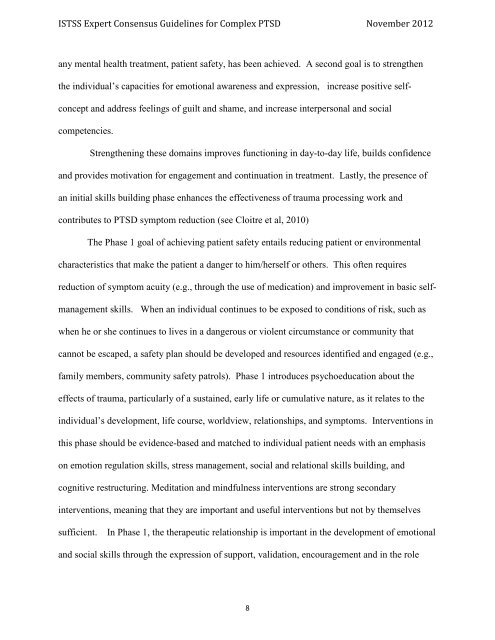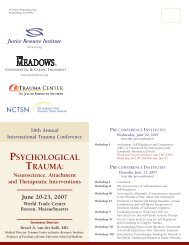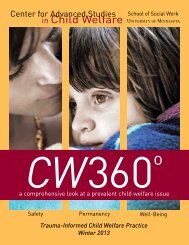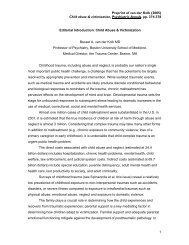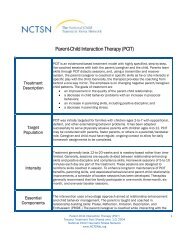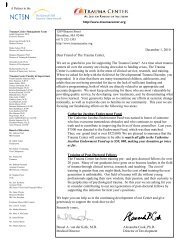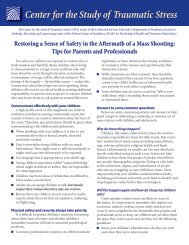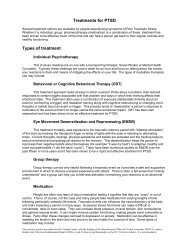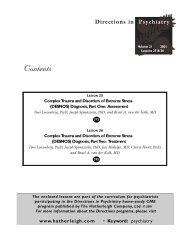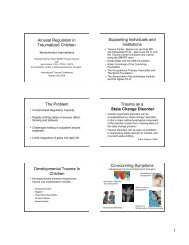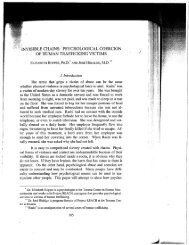ISTSS Expert Consensus Treatment Guidelines for Complex PTSD
ISTSS Expert Consensus Treatment Guidelines for Complex PTSD
ISTSS Expert Consensus Treatment Guidelines for Complex PTSD
You also want an ePaper? Increase the reach of your titles
YUMPU automatically turns print PDFs into web optimized ePapers that Google loves.
<strong>ISTSS</strong> <strong>Expert</strong> <strong>Consensus</strong> <strong>Guidelines</strong> <strong>for</strong> <strong>Complex</strong> <strong>PTSD</strong> November 2012<br />
any mental health treatment, patient safety, has been achieved. A second goal is to strengthen<br />
the individual’s capacities <strong>for</strong> emotional awareness and expression, increase positive selfconcept<br />
and address feelings of guilt and shame, and increase interpersonal and social<br />
competencies.<br />
Strengthening these domains improves functioning in day-to-day life, builds confidence<br />
and provides motivation <strong>for</strong> engagement and continuation in treatment. Lastly, the presence of<br />
an initial skills building phase enhances the effectiveness of trauma processing work and<br />
contributes to <strong>PTSD</strong> symptom reduction (see Cloitre et al, 2010)<br />
The Phase 1 goal of achieving patient safety entails reducing patient or environmental<br />
characteristics that make the patient a danger to him/herself or others. This often requires<br />
reduction of symptom acuity (e.g., through the use of medication) and improvement in basic selfmanagement<br />
skills. When an individual continues to be exposed to conditions of risk, such as<br />
when he or she continues to lives in a dangerous or violent circumstance or community that<br />
cannot be escaped, a safety plan should be developed and resources identified and engaged (e.g.,<br />
family members, community safety patrols). Phase 1 introduces psychoeducation about the<br />
effects of trauma, particularly of a sustained, early life or cumulative nature, as it relates to the<br />
individual’s development, life course, worldview, relationships, and symptoms. Interventions in<br />
this phase should be evidence-based and matched to individual patient needs with an emphasis<br />
on emotion regulation skills, stress management, social and relational skills building, and<br />
cognitive restructuring. Meditation and mindfulness interventions are strong secondary<br />
interventions, meaning that they are important and useful interventions but not by themselves<br />
sufficient.<br />
In Phase 1, the therapeutic relationship is important in the development of emotional<br />
and social skills through the expression of support, validation, encouragement and in the role<br />
8


